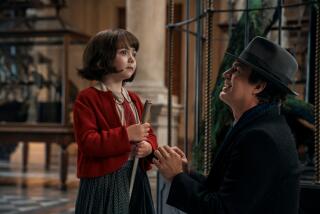Closed Captioning for TV and Films
- Share via
Re “A World Muffled and More Distant” and “How’s That?: The Aural Mechanics” (Feb. 28) and the over 26 million Americans who are hearing-impaired: I hope that these articles serve to highlight the need to continue focusing attention on closed captioning on television and movies. Nearly 10 years ago, I appeared before Congress to lobby on behalf of efforts to make closed-captioning technology mandatory in television sets 13 inches or larger. Thankfully, that bill passed.
However, just a few years later, I and millions of other hearing-impaired individuals were still unable to turn on our televisions for captioned breaking news on such stories as the Los Angeles riots or the Northridge earthquake.
To this day, I still cannot watch “Annie Hall,” because the video is not closed-captioned. Countless television programs in our 200-channel universe are broadcast uncaptioned. As someone who was recognized with an Academy Award and is often asked to lobby on behalf of the film industry, I am embarrassed to say it is still virtually impossible for deaf people to enjoy films in theaters, because no nationwide standard exists to make theatrical releases accessible to the hearing-impaired.
The hearing-impaired population may live in silence, but we don’t have to be deprived of the kind of information and entertainment so many people take for granted. If efforts to provide closed captioning don’t keep up with the growing numbers of deaf and hearing-impaired children and adults, silence will be the last thing you’ll hear from them.
MARLEE MATLIN
Los Angeles
More to Read
Sign up for Essential California
The most important California stories and recommendations in your inbox every morning.
You may occasionally receive promotional content from the Los Angeles Times.










